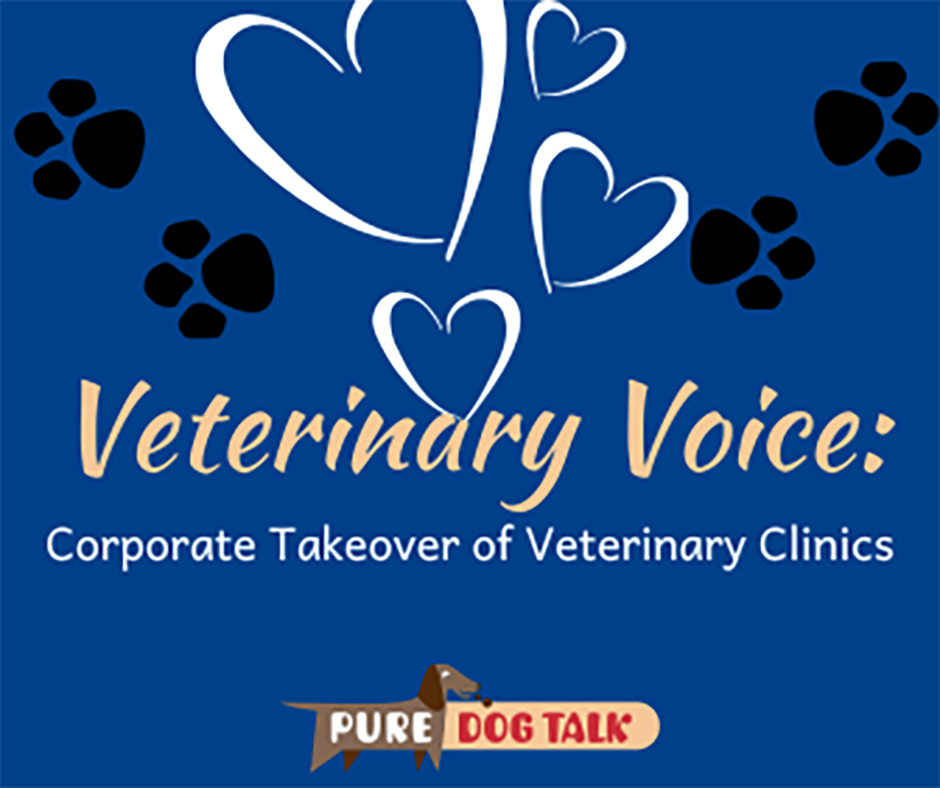654 – Corporate Takeover of Veterinary Clinics
Corporate Takeover of Veterinary Clinics
Dr. Marty Greer joins host Laura Reeves for a very current conversation about corporate takeover of veterinary clinics.
“The trend to purchase veterinary clinics has been going on for probably about 12 to 15 years,” Greer said. “It started with just a couple of consolidators. It’s now up to about 80 and some of the consolidators have consolidated. So we now see some of these groups recapitalizing and then moving on and being sold to another consolidator.
“So it’s been kind of interesting to watch and frankly pretty scary. Just before COVID, the prices of veterinary clinics were at an all -time high, and then it dropped during COVID.
“They tell you that they will give your staff better benefits, and they probably do. They tell you we will unload all that stuff off of you that you don’t want to deal with. The HR, the purchasing, all the back-office stuff that you as a veterinarian didn’t go to vet school for, didn’t learn in vet school, don’t want to learn, don’t want to know, don’t want to deal with.
“They’ll say we’re gonna lift all this off your shoulders, you can just practice medicine, it’s gonna be awesome. And if you’re a large producer in the practice, the owner or one of the bigger producers, they want you to stay for two years.
“It has different impacts in different practices. The practices that we’ve really watched the most closely personally are the practices that have done a lot of reproductive services in our community, either in our immediate area or across the country because these are colleagues of ours.
“And that to me has been really hard to watch because a lot of the practices have not continued to thrive after the sale of the practice.”
Marty and Laura continue with a conversation about how breeders can work with the larger community to help change the conversation about dog breeding that trickles down to the people who become veterinarians.
338 — Intestinal Blockages: Prevention, Treatment, Recovery
Intestinal Blockages: Prevention, Treatment, Recovery
Dr. Marty Greer DVM shares some horror stories of what and why dogs eat things they shouldn’t that cause intestinal blockages. An ounce of prevention is worth a pound of cure, Greer said.
Puppy Proof Your House
Puppies explore their environment with their mouths, Greer noted. “If it’s smaller than their head, they may swallow it,” she said.
Be careful with your pets’ access to anything they can eat, bottom line. The dog that eats things often will repeat the behavior. The owners need to learn from the dog’s mistakes and be sure their environment is safe.
Even a crated dog isn’t always out of danger — be sure not to put anything on or near the dog’s crate.
Retrievers at High Risk
Teaching young dogs to trade something inappropriate in their mouths for a treat is a helpful way to set the dog up for success and avoid dangerous blockages.
Induce Vomiting
We have all been told to use hydrogen peroxide to make the dog vomit if you see it eat something inappropriate. Greer strongly recommends, instead, a trip to the vet for a dose of Apomorphine. This is a safer alternative than the peroxide, which can have dangerous side effects.
Difficult Diagnosis
Even when you suspect the dog might have eaten something, the x-rays are not always successful at showing a blockage. Cloth and non-metal items won’t show up.
A lethargic dog that doesn’t eat and has repeated vomiting, can’t keep down food or even water, is one that is going to be suspect for a blockage.
Pregnancy Increases Danger
Pregnant bitches may have nausea that they will try to assuage by eating whatever they can get ahold of, Greer said. Hyper awareness with them is imperative.
Treatment
Intestinal blockage is a life-threatening situation. The dog will need emergency and often exploratory surgery. The recovery is extended and difficult. After surgery, the dogs are required to stay on IV fluids for 48-72 hours.
310 – Vet Voice: Breed Specific Anesthesia Fact and Fiction
Breed Specific Anesthesia Fact and Fiction
Dr. Marty Greer brings us information about breed specific anesthesia myths and realities to provide peace of mind and knowledge.
“Everyone has an opinion and an experience,” Greer said. “Anesthesia is controlled death. We have to be respectful and appreciative of the advances in medicine. Your vet wants to know that you have the facts to have an informed conversation.”
Modern anesthesia drugs are “So impactful in the ability to wander through the body surgically in a way we can cure things we never could before. It’s amazing,” Greer said.
Breakthroughs in new drugs and monitoring equipment make today’s anesthetic procedures safer for all dogs. Nonetheless, certain groups of dogs have specific needs.
Sighthounds
Sighthounds, athletes that they are, boast only 17% body fat vs 35% body fat in most dogs, Greer said. This means the anesthesia drugs metabolize slower in their systems. Higher red blood cel count and lower albumin also changes the metabolism of drugs in sighthound breeds. The low body fat also means they can become hypothermic more easily.
Toy breeds
Greer noted that veterinary staff work harder at keeping toy dogs warm. They go so far as to use bubble wrap on the dogs legs, to help keep them warmer without a risk of thermal burns. The toy dogs’ small size can also mean a concern about blood sugar dropping during surgery. This means owners are encouraged to not withhold food for as long and staff carefully monitors glucose levels during surgery.
Brachycephalic
The airways in brachycephalic dogs are constructed differently, Greer said. They often have a narrow airway and a smaller trachea. The goal of the veterinary staff will be to get the airway under control as soon as possible. Greer also recommends medications to dry up oral secretions so the dogs don’t aspirate.
Giant breeds
Greer’s recommendation for giant breed dogs is to give a lower dose of sedative before anesthesia. By using a combination of drugs, she is able to ensure that each drug can be administered at a lower dose.



